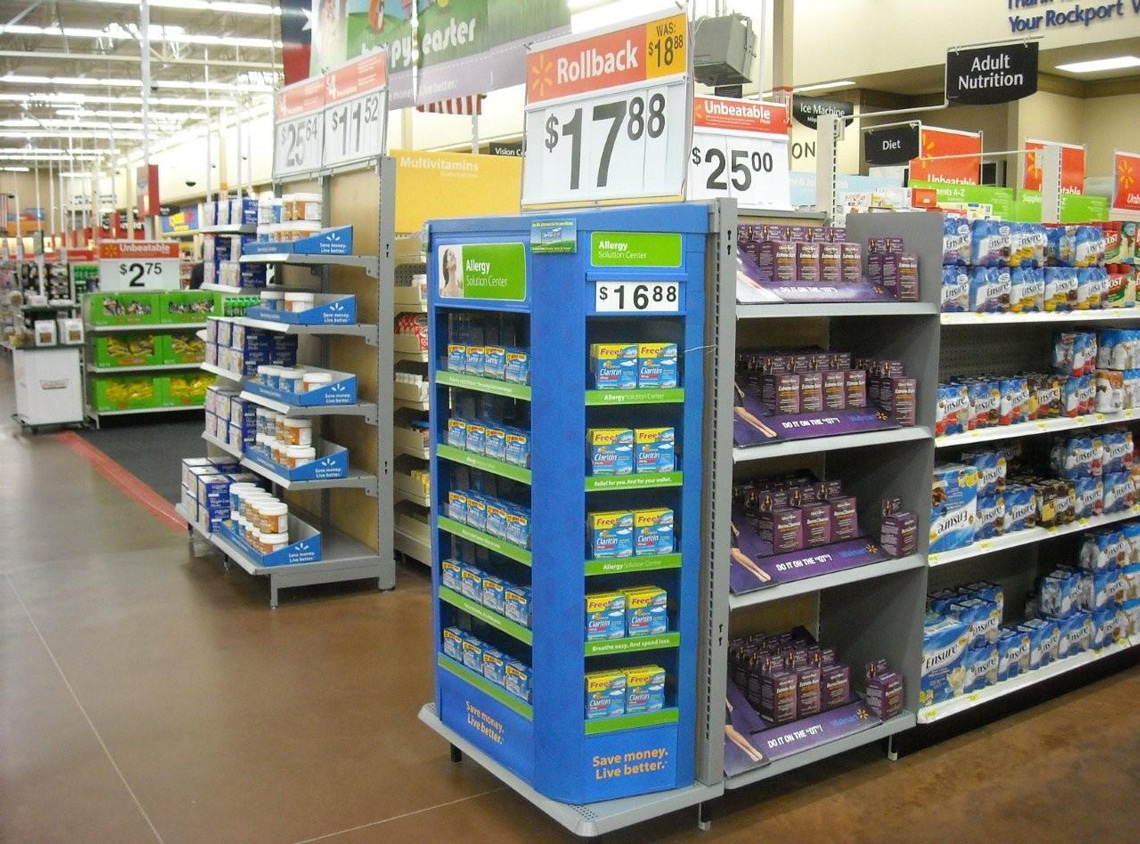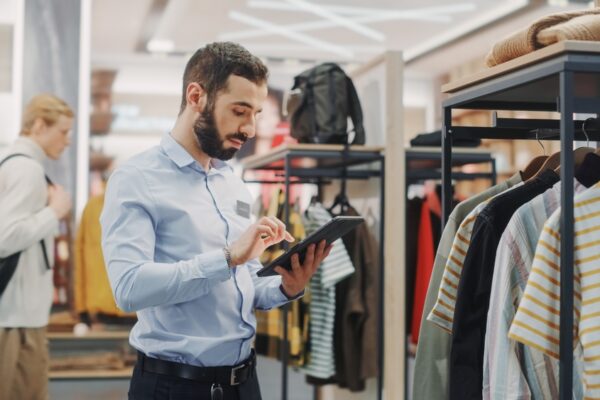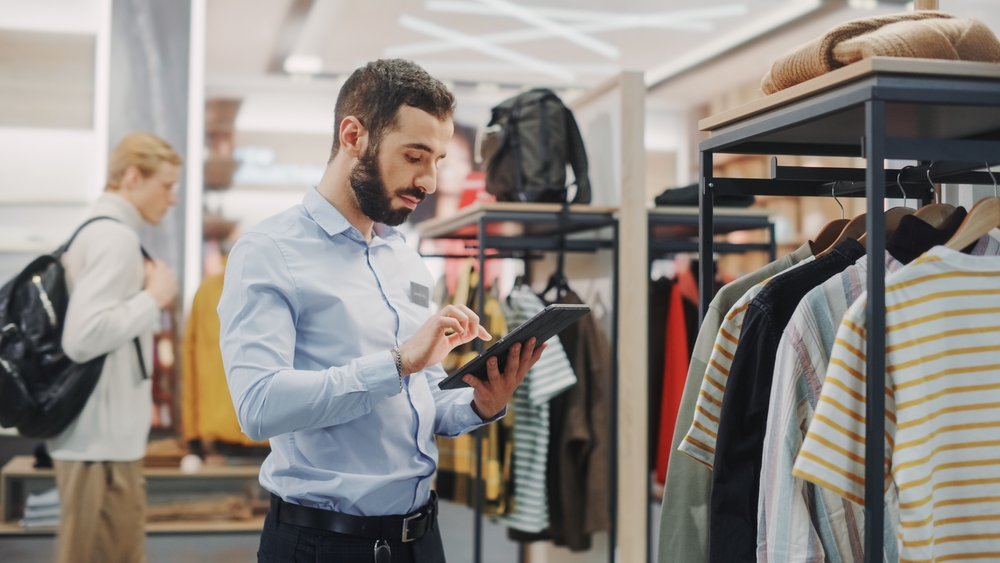
Retail Visual Merchandising And Why It’s Important
Why Visual Merchandising Is More Important Now Than Ever For Brands and Retailers.
Retail visual merchandising has been around for a long, long time. In fact, as long as there have been retail stores and venues, there have been sales experts trying to dazzle their customers with great visual merchandising concepts.
So, it might come as a surprise to hear that after all this time, the current retail climate just might be the most important one of all to focus on visual merchandising. At first blush, this might seem a little counterintuitive. After all, with the insurgence of online shopping over the past decade and the convenience and instant gratification that come with it, why would in-store merchandising be growing in importance?
The reality for brands and retailers is that the landscape of sales has changed dramatically. What this really means for anyone in retail sales is that the landscape of customers has changed dramatically. In fact, it might be more accurate to say it has changed by lightyears.
Today’s customer and visual retail merchandising.
The continued growth of e-commerce has certainly brought forth a number of new challenges for brick-and-mortar retailers. How do you compete with the ease of online shopping? How do you bring people into stores when they no longer have to visit to get the stuff they need? Most of all, how do you build your physical and virtual operations to meet customers needs in an omnichannel retail universe that is driven by faster speeds and greater convenience, and frequented by customers with ever-diminishing attention spans?
This is the “A-ha Moment” for brands and retailers operating in the brick-and-mortar world and smart retail visual merchandising lies at the crux of it.
Physical retail isn’t going anywhere, folks. People still enjoy seeing, touching, and experiencing products in person. They still like getting answers from someone who is a genuine expert and not a chatbot pretending to be one.
Absolutely, the retail game is different now. The customer is different now, and this is the very reason that retail visual merchandising just might be more important for brands and retailers today than ever before.
Visual merchandising in the digital age.
There’s no doubt it comes with added challenges. However, it also comes with added opportunities for retail companies willing and able to bring a healthy digital mindset to their brick-and-mortar spaces. So what’s that mean?
It means realizing that customers have already adopted a different mindset when shopping in stores. Thanks to all the time they’ve spent immersed in online commerce, they’ve come to expect instant fulfillment in their shopping experiences in the physical space, too.
Today’s customers aren’t willing to wait for answers, and they don’t want to spend a lot of time looking to find exactly what they want when navigating store aisles. They want to see and experience products in the moment. As a retailer, you do not have a lot of time or a bunch of second chances to win your customers’ attention. However, if you do manage to stop them in their tracks, they will engage.
You can probably tell where this is headed in terms of retail visual merchandising. Now more than ever your product displays and store merchandising must be impactful, interesting, engaging and arresting. Otherwise, all they’re really going to end up being is invisible.
What follows are a few tips and techniques to help you create a retail visual merchandising strategy that will turn more heads and rack up more sales.
Start by thinking omnichannel with your visual merchandising.
Your customers are going to shop both online and in stores. So, it’s important to make sure your retail visual merchandising is aligned with your website design and architecture. For instance, if you operate your own branded stores, the floor layout, décor, and shelf displays should have a familial feel with the colors and layouts shoppers will experience when browsing your website. If your products are featured in big-box retailers, your displays and product merchandising should be in tune with what customers find in your online shop.
Apply these 7 tips for more impactful retail visual merchandising.
They say the average attention span for those of us living in today’s message-charged world is about eight seconds. That’s not a lot of time to get noticed, let alone get your message across. Here are a few tips to creating visual merchandising and product displays that will attract more customers and lead to higher conversion rates.
- Remember, colors are powerful
The colors you incorporate into your merchandising displays are key to both winning the attention of customers and reflecting your individual brand image. Is your brand bold and brash? If so, maybe a vibrant, or even fluorescent, color scheme sets the right tone. Are your products elegant or sophisticated? Perhaps, now you’re looking at a minimalist black and white motif or a monochromatic design. Are your products all-natural or outdoorsy? Greens and blues just might be the perfect choice. Of course, it’s also important to make sure any merchandising colors work with your product packaging and marketing materials. The point is to make sure you use color in ways that are both eye-catching and evocative of your brand image.
- Make sure your products are the stars
It’s important to create a focal point in any visual merchandising display. This is the place where the eye is predominantly drawn. As a general rule, it shouldn’t be too high or too low on the display. It also shouldn’t give the viewer any real choice or confusion as to where to look. The hot spot in your display should clearly and quickly draw your customers’ attention – and that’s where your product or products should shine. For example, say you own a company selling diamond jewelry and you’ve decided to create an elaborate wedding-themed visual merchandising program. Well, you want to make sure that the diamond rings you’re selling are a focal point of your displays. You never want products to feel lost in a display. You want them to be the stars of it.
- Tell a story with your visual merchandising
Customers appreciate a good reason or two to stop and explore. By telling a story, we don’t mean penning some elaborate narrative. We mean giving customers a few bullet-point incentives to consider your brand and products. Maybe it’s a single compelling headline on your signage. Maybe it’s a price-driven special offer. Maybe it’s using graphic design or spectacular photography to tell the story. Companies in the travel industry tend to do this quite well. A secluded stretch of white-sand beach presents a story to the viewer that doesn’t need to be elaborated upon with a lot of words.
- Re-examine that empty space
There’s an area in most retail stores that tends to go unoptimized – the space between shelves and displays and the ceiling. If you look up to find this area of your retail store or display a little lacking, it’s time to remedy the situation. You can take advantage of this space in many different ways that can help gain the attention of your customers. Hanging signage is always a good option – whether it’s customer testimonials, new product introductions, or limited-time offers. You can also use this space to add to the décor of your store. Think relevant lifestyle photography or graphic images showcasing your specific product or products in action. For example, a golf retailer might feature signature greens from legendary courses around the world. A fragrance company might feature images of the flowers and other scents that have inspired their perfumes. Just remember, that empty space above your displays is valuable visual merchandising real estate.
- Feature as many products as possible without becoming cluttered.
An effective visual merchandising display strikes the perfect balance between showcasing a wide selection of products and not looking like a crowded mess. It’s always a good idea to give customers different options in order to both catch and keep their attention. But make sure your merchandising feels crisp, clean, and sharp. Also, make sure it’s easy for customers to access products. They shouldn’t be too high or too low and there shouldn’t be any barriers preventing customers from accessing your product.
- Seasonality
Almost every brand and retailer experiences seasonality. From back-to-school to Mother’s Day to the holidays, tailoring visual merchandising to your peak sales periods might seem obvious, however, many brands and retailers go about it as “business as usual”. Use these annual sales opportunities to craft visual merchandising displays that break through the clutter. Do something different. Make a statement. Position your seasonal displays in the front of the store or high-traffic areas for maximum impact. The point is, approach seasonality as the chance to introduce fresh, innovative merchandising ideas to drive conversions during your peak sales periods.
- Leverage the latest retail technologies
A great way to align your online environment with your visual merchandising is to incorporate technology into the store experience. It might be as simple as adding high-definition video monitors to your displays. Or, you might consider capitalizing on some of new, state-of-the-art customer engagement solutions that are incorporating virtual reality and live agents into merchandising.
Leading the way in this regard is a new platform called ViBA, which stands for Virtual Interactive Brand Assistant, being introduced by The Revenue Optimization Companies (T-ROC), a provider of retail marketing and merchandising services to some of the world’s top brands and retailers.
ViBA uses Smart Signs and QR code technology to transform merchandising into a one-on-one customer interaction. Simply stepping up to a Smart Sign or scanning a QR code placed on any product or display, instantly launches a personalized customer experience.
“Customers can speak directly with our virtual assistant, named Valerie, who is programmed to answer any and all questions they might have about a brand and its products. They can also get routed to a live agent who’s been trained to provide exceptional service remotely. Plus, either agent can call up product demonstrations, videos, special offers and more on the spot to provide a level of service that marries technology with a personal touch,” says Eddie Maza, Vice President of Marketing for T-ROC.
Solutions like ViBA are changing the game in retail visual merchandising, transforming in-store signage and product displays into deeply engaging customer service experiences. For more information about ViBA and other visual merchandising solutions, contact The Revenue Optimization Companies.
Takeaways
Perhaps, the biggest one is that brick-and-mortar retail is in a great place to capitalize on a new generation of customers. These shoppers have grown up with or grown accustomed to the ease and convenience of e-commerce. Recently, we’ve seen further increases in online buying due to the COVID-19 crisis.
However, these same customers still appreciate the experience of shopping in stores. They still enjoy engaging with products up-close and personal. They like being able to ask a trained salesperson for help, and, after a long time away, they’re eager to go shopping again.
Brick-and-mortar retail is ripe with opportunity. However, merchandisers are going to have to rethink their strategies. Today’s customer moves faster, shops smarter, and has little patience for experiences that aren’t immediately viewed as worthwhile. In terms of retail visual merchandising, that means your displays will have to work even harder to stop customers in their tracks.
If you found this post helpful, you can learn more about retail visual merchandising and retail management best practices at www.trocglobal.com. Be sure to check out our other retail-focused blogs at https://trocglobal.com/company/#blog.
TROC is the leading provider of premier staffing outsource, software, managed technology services, and consumer insights for the top global brands, retailers, manufacturers, service providers, and distributors. The company’s distinctive solutions address the entire lifecycle of brick and mortar brand and retail operations by combining retail expertise, best practices, and technology to help its customers achieve sales and operational excellence as well as a sustainable competitive advantage. As a Retail 4.0 thought leader, T-ROC enables companies with high-value products in the physical world to thrive through the digitalization of the physical shopping experience. To learn more about T-ROC, visit www.trocglobal.com.








